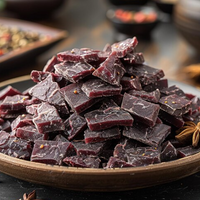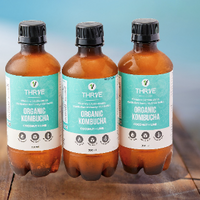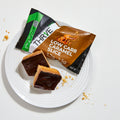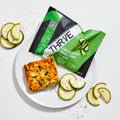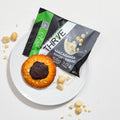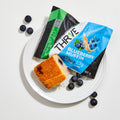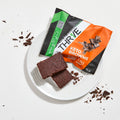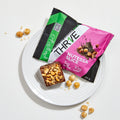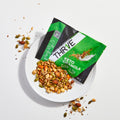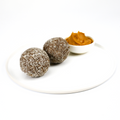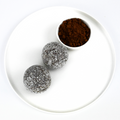Is eating low-carb sustainable beyond the summer shred? Cycling between low-carb days and moderate carb days is a great way to make low-carb a lifestyle.
 ‘Carb cycling’ is a way of eating that can help you shed body fat and perform at your best. For a full intro, click here. But the question is: can you eat this way in the long term – even if you are moving between low and moderate carb days?
‘Carb cycling’ is a way of eating that can help you shed body fat and perform at your best. For a full intro, click here. But the question is: can you eat this way in the long term – even if you are moving between low and moderate carb days?
The short answer is yes. However, THR1VE Nutritionist Shannon Young says that this way of eating works best when combined with an exercise program – especially strength-training. Yet, regardless of your training schedule, you can keep it up. “Your fat and protein intake and timing around carb consumption can be adjusted depending on your needs and goals,” says Young.
What’s the benefit?
For one, when your body adapts to functioning on low carbs, it converts to being from carb-burner to a fat-burner – essentially, it uses fat for energy. Most people have greater stores of stored fat, so they have a more stable energy source.
It also has a hormonal upside. “Carb cycling or ‘Cyclic Low Carb’ optimizes growth hormone and testosterone in the body. Both these hormones are anabolic and lipolytic, meaning they enhance muscular size and strength, increase metabolism and burn body fat. Increased levels also increase sex drive and performance and an increase in energy levels,” says Young. “Studies have also shown that by reducing complex carbohydrates and consuming lower glycaemic foods, cortisol levels are reduced. Cortisol is known as the ‘stress hormone’ and high levels can result in your body holding onto fat and decreasing overall muscle composition.”
Eating this way helps you rethink the types of foods, particularly carbs, you’re eating day-to-day. All carbs are not created equal – we’re looking at you, white bread. “Make sure you are consuming nutrient-dense carbohydrates that contain a range of essential vitamins, minerals and fibre, are wholegrain (contain the bran, germ and endosperm) and are slowly-absorbed (low GI),” says Young. “These include root vegetables (sweet potato, pumpkin), properly prepared legumes, oats, brown rice and gluten-free grains and fruits such as bananas, apples and pears.”
Take note!
If you’re sticking with carb cycling long term, there’s a few things to watch out for. Firstly, when cutting back on carbs, you may reduce both fibre and essential vitamins and minerals, such as B vitamins. “It is important to make sure you are replacing these with the right foods and I would recommend an abundance of non-starchy vegetables – this will supply your body with plenty of vitamins, minerals and fibre,” says Young.
Feeling like you have less energy? “Monitor overall calorie intake to make sure you’re still consuming the right amount of calories to suit your activity levels. Increasing your intake of ‘healthy’ (unsaturated) fats such as avocado, oily fish, nuts and seeds helps keep energy levels up,” says Young.
Want to make it easy?
Check out THR1VE’s range of fresh ready meals – there’s low carb and moderate carb options for you to cycle your carb intake.

